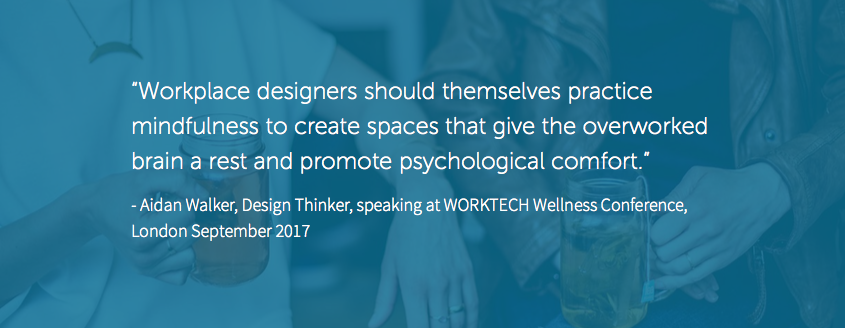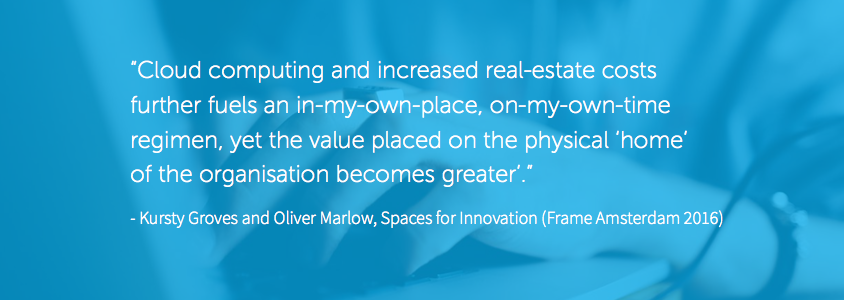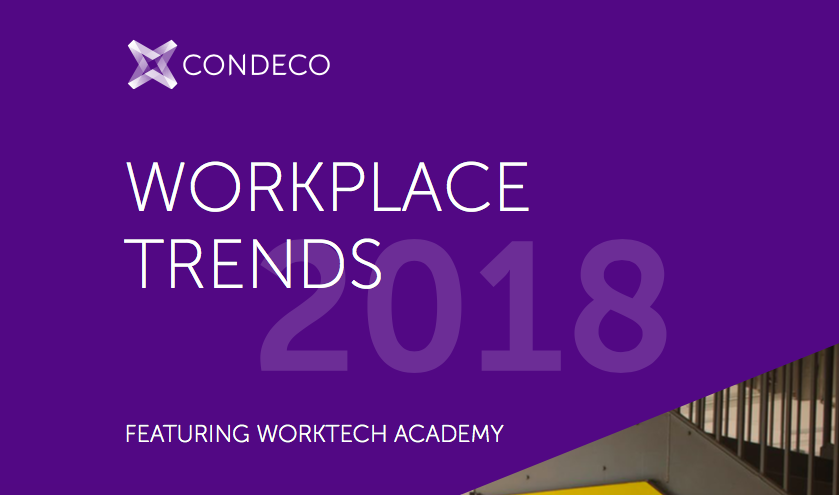25 Jul Workplace trends for 2018 – biophilic design, hybrid spaces and cognitive buildings
The world of work is changing. Traditional hierarchies, processes and environments are being reimagined with a renewed focus on end-user centricity, wellness and productivity.
If organisations are going to remain competitive and attract top talent, they have to keep up with the pace of change. After all, businesses aren’t just competing for new customers, they’re also competing for the best employees.

Condeco are one of Ricoh’s strategic partners and a market leader in workspace management. As such, we’re always keen to hear what trends they can see on the horizon. When we heard their new Workplace Trends report was out, we had to take a look inside.
If you want to explore the future of our working lives, click on the banner below to download your copy.
People
Work how you like
The lines between the devices we use for work and the devices we use at home are becoming increasingly blurred. Anyone who’s ever taken their work laptop home to watch Netflix on can attest to this.
On the flipside, BYOD (‘Bring Your Own Device’) policies are becoming more common. And this autonomy doesn’t end at what device you use or how you use it. Offices are now designed with open, adaptable spaces, to encourage people to work away from their desk.
Across the board, businesses are helping employees to work how they want. In the belief that greater autonomy will lead to greater satisfaction and creativity.
Wellbeing in the workplace
“If you want something done, ask a busy person.”
It might sound counter-intuitive, but it’s usually true. The right amount of pressure can help us to focus. But too much pressure has been proven to have a devastating effect on productivity, as well as health and wellbeing.
For this reason, modern workplaces are increasingly designed with wellness in mind. Designers are creating bright, airy, open spaces where people can take a quick breather to gather their thoughts. Others are offering regular yoga or mindfulness classes before or after work to help employees to unwind.

Community spirit
Whether your company is just five employees or five-hundred, fostering a sense of community will increase cohesion, participation and job satisfaction. After all, everybody wants to feel like they’re part of something.
Placemaking has a key role to play in this. Large social spaces, in particular spaces where the company can gather to share news, socialise and eat meals, can help turn a workplace into a social space. And in doing so, turn colleagues into close-knit teams.
Process
Robotic colleagues
Depending on what industry you work in, robots in the workplace may be nothing new to you. Robots have been a common feature in factories, assembly lines and distribution warehouses for some time. But in the relatively near future, we may see robots in offices too.
Robots and AI are set to pick up the more mundane, transactional and repetitive tasks, freeing humans up to concentrate on the more complex, creative and intuitive jobs. But there are a number of roadblocks that need to be navigated in order for this to happen, including the reworking of current labour laws and figuring out the best way to manage the backlash against our new robotic co-workers.
Hierarchies out, networks in
Traditional, top-down hierarchies are increasingly being replaced by fluid, peer-to-peer networks. Knowledge sharing between teams and across the entire business is being seen as a key driver of productivity. The role of management has shifted from dictating the conversation, to facilitating this process of knowledge transfer.
Organisations which are looking to encourage peer-to-peer knowledge sharing within their business should focus on building transparency, mutual trust, responsiveness and resilience. You can find more information on these in the full report.

Workplace
Bring in the outdoors
Biophilic design may sound complex, but chances are your business is already using it. Anyone with a plant on or beside their desk or maximising the use of natural light has already realised the value of incorporating natural elements into workplace design.
If your workplace is feeling a little stark, it’s easy to lift the mood with some simple biophilic elements. Get started by using natural surfaces such as unpainted wood, introducing plants and creating energising spaces by using natural light as much as possible.

The rise of the hybrid space
Hybrid spaces combine business and social functions to create environments which foster wellbeing as well as productivity. As the lines between work and life continue to blur and the balance between the two shifts, hybrid spaces allow employers to create spaces where staff can collaborate and socialise, enhancing cohesion, satisfaction and work rate.
All generations welcome
For a number of years, there has been a focus around creating workplaces that will attract younger employees, particularly millennials. However, focusing too much on one demographic can alienate others.
Businesses are now choosing to design workplaces that appeal to all generations. An effective workplace will meet the needs of your youngest employee, as well as your oldest. This includes not only office furniture and design but also technology. Employers have to assess the needs and tastes of each generation and ask themselves whether the workplace suits them or whether they’re being ignored.
Technology
The new paradigm of cloud computing
Using a network of remote servers to store, manage and process data has already enabled IT teams to cut down on the use of physical space plus the expensive setup and maintenance costs of running local servers.
But cloud technologies are now enabling HR teams to help employees to find their own preferred way of working. By reducing our reliance on company-run hardware and networks, employees can work wherever and on whatever they like.

Human-centric technology
Technology mediates almost every aspect of our working lives. But the most successful workplace technologies facilitate existing human behaviour or solve existing problems. The least successful innovations tend to get dismissed as “innovation for innovation’s sake”.
As we introduce new technology into the workplace, we need to ensure that it serves a clear purpose and helps teams to meet existing goals. There is another growing trend around discretion – cloud computing has allowed us to get rid of a lot of hardware, helping us make the most of the space that we have.
The cognitive workplace
By collecting and analysing data on how a workplace is used, businesses can enhance productivity, cut down on waste and look after employee wellbeing. Staff who are regularly working late into the evening can be identified, as can technology that is left on overnight.
Routine facilities management tasks can be automated, as can time-consuming administrative tasks, such as facilitating desk moves. Ultimately, the smarter your office becomes, the less management time it will require and the more businesses can learn about their employees’ working lives.
If you want to learn more about any of the trends mentioned above, be sure to take a look at the full Condeco report.




